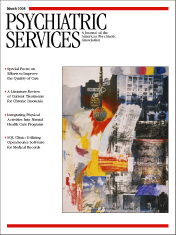Diagnosis and Treatment of Chronic Insomnia: A Review
Abstract
OBJECTIVE: Insomnia has high prevalence rates and is associated with significant personal and socioeconomic burden, yet it remains largely underrecognized and inadequately treated. METHODS: A PubMed search for English-language articles covering randomized controlled trials published between 1970 and 2004 was conducted. Search terms used were "insomnia," "behavioral therapy," and the generic names of agents commonly used to treat insomnia (the Food and Drug Administration-approved benzodiazepines and nonbenzodiazepines, trazodone, and over-the-counter agents). RESULTS: Evidence from epidemiologic studies, physician surveys, and clinical studies suggests that numerous patient and physician factors contribute to the fact that the needs of patients with insomnia remain unmet, including low reporting of insomnia by patients, limited physician training, and office-based time constraints, as well as misconceptions about the seriousness of insomnia, the advantages of treatment, and the risks associated with hypnotic use. Nonpharmacologic therapies produce long-lasting and reliable changes among people with chronic insomnia and have minimal side effects. Pharmacologic therapies have proven effective with improving wake time after sleep onset and sleep maintenance and reducing the number of nighttime awakenings. However, pharmacologic therapy has a greater chance of producing side effects. No conclusive evidence exists to favor either pharmacologic therapy or behavioral therapy. CONCLUSIONS: Insomnia is particularly challenging for clinicians because of the lack of guidelines and the small number of studies conducted in patient populations with behavioral and pharmacologic therapies. Current treatment options do not address the needs of difficult-to-treat patients with chronic insomnia, such as the elderly, and those with comorbid medical and psychiatric conditions. More research is necessary to determine the long-term effects of insomnia treatments.



